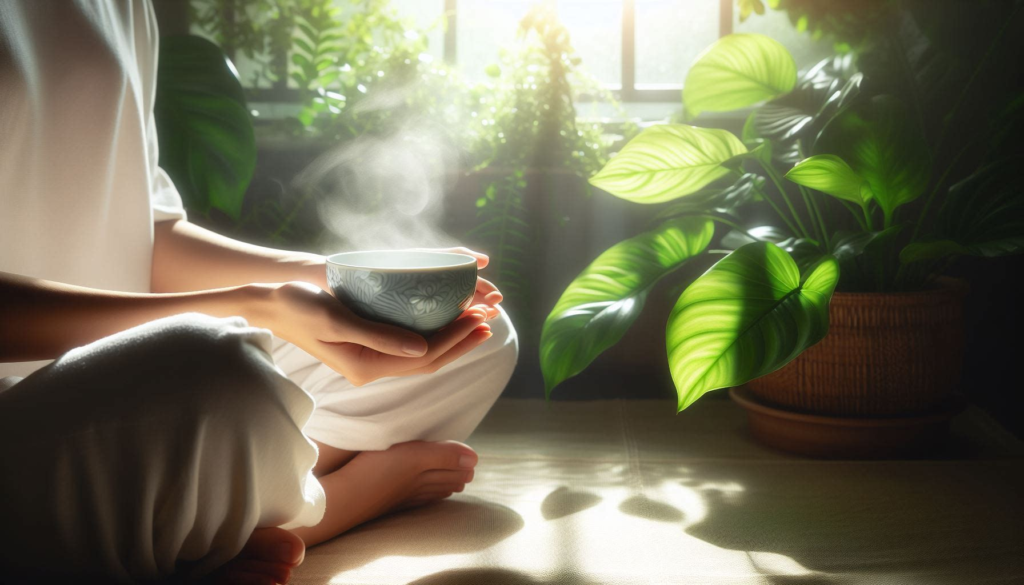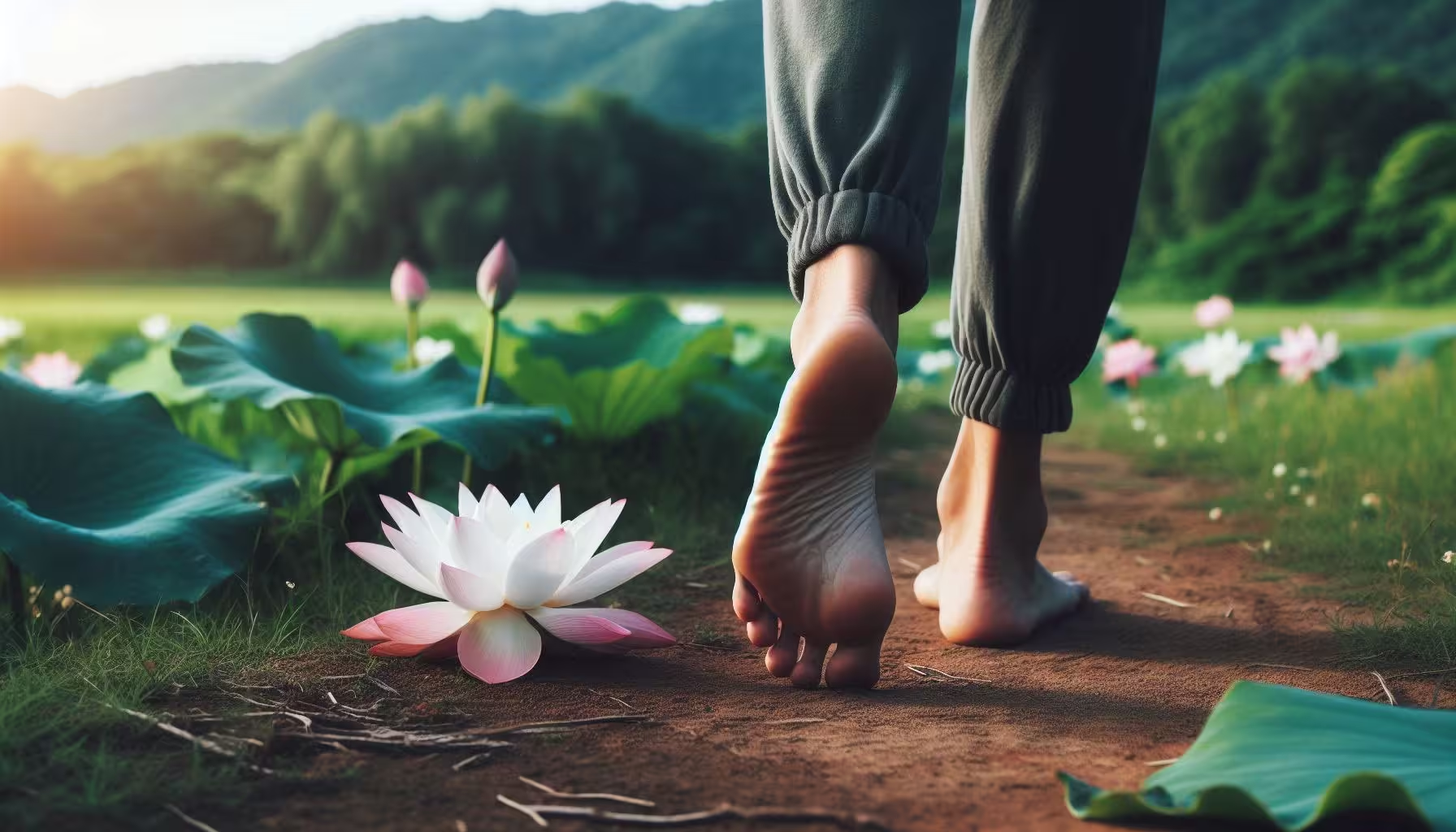What is Grounding Meditation and how to practice it?
What is grounding meditation?
According to the Cambridge Dictionary, to be grounded is “to be based firmly onto something”. And when we talk about the ground, we would expect it to be something firm, solid, steady, and immovable, hence the definition of grounding meditation. It involves returning your mind and body to a stable, solid state of equilibrium, making you less susceptible to negative influences from external factors.
Grounding can be used as the beginning and ending stages of your meditation, or it can be used as a meditation itself. It is a great way to prepare for take-off for the journey ahead, as well as providing a strong anchor point for your return.
If your life has been hectic lately, with so many demands, people, schedules, thoughts, grounding can help you gather that scattered energy and reclaim it.
“We are grounded when we are aware of the physical sensations in our bodies, the physical things and events around us, and the physical exchanges between the two”
Ken Mellor – Inspiration, Meditation and Personal Wellbeing, A practical guide to Balanced Living.
Is grounding different from mindfulness?
Mindfulness is a broad concept that may encompass grounding. Grounding involves focusing on one’s inner and outer senses, while mindfulness entails a deeper presence in the moment, an awareness and enjoyment of the simplest occurrences.
Grounding teaches one to center their attention on the present, rather than on overwhelming experiences, aiming to recollect scattered energy from the day. Mindfulness, on the other hand, cultivates an awareness of one’s surroundings, fostering appreciation and compassion for all life forms, no matter how small. While grounding typically requires sitting quietly for a few minutes, mindfulness can be practiced at any time throughout the day.
How do you practice grounding meditation?
The easiest way to practice grounding meditation is to spend this time being aware of your breath. You can either notice your belly going up and down with each breath, or you can notice the gentle flow of air coming in and out of your nostrils, and be aware of the sensations as the air flows.
There are other physical sensations as well as thoughts and emotions that you can pay attention to, depending on the time you have. They can be tastes in your mouth, colours that you can see, the fragrance in the air.
It is recommended that when you first start practicing meditation, you would pay attention to the external environment first, before moving onto noticing what is happening emotionally and mentally.
Dealing with our own emotions is never easy, especially if we have experienced a difficult time. Therefore, before we can learn to accept our emotions and thoughts, we must learn to look at the external events as they are, with a non-judging attitude.
Once you feel that you are comfortable with physical sensation grounding practice, you can start moving on to internal sensation grounding.
How do you ground yourself after meditation?
Some meditation techniques can leave us feeling like we are still floating. This is a very relaxing and lovely feeling, unless you have to drive to work, pick up your kids, or go shopping after. If these are usually the cases, you may like to lengthen your grounding stage at the end of your meditation, or you may like to do some simple activities to help you feel more grounded. Below are a few suggestion:
- Walk outside and take a few fresh breaths
- Drink some water
- Stretching
- Play with your pets.
- Be aware of what is in presence in the moment, what you can hear, touch, taste, see or smell.
- Have a shower
- Talk with someone

How long should you ground each day?
It is recommended that you practice grounding for 30 minutes a day. However, that is only a guideline since everyone’s needs are different.
If you are new to meditation, I suggest you start with 1 minute, twice a day, then gradually increasing the time to half an hour a day. And remember to only increase the increment once you have really enjoyed your shorter grounding meditation time. In this manner, grounding meditation can transform into an activity you relish rather than something you compel yourself to do solely for your mental well-being.
Sample grounding meditation script
Wherever you are now, whatever you are doing, allowing yourself to stop and find a place to sit down, either on the floor, or on the chair, even a quiet staircase, wherever works for you.
Once you have found the right place, allowing yourself to take a seat. Making sure your posture is balanced, your back is straight, your jaws relaxed, your shoulders dropped away from your ears, your hands rested in your lap or on your sides.
Before closing your eyes, noticing what is around you here and now. Any objects, colours, shapes, lights, what time of the day is it. Allowing yourself to really connect with this space and time,
When you feel it is the right moment, softly closing your eyes. Being aware of where you are seating right now. The point of contact between your body and the surface. How does that surface feel? Soft or hard? Warm or cold? Smooth or rough? Gently being aware of it.
In your own time, gently shifting your awareness to your breath. You may like to take a few deep breaths, a deep inhalation through the nose, and a big exhalation through your mouth. Gently coming back to your normal breath when you feel it is right for you to do so.
As you are watching your breath, noticing too what fragrance is currently present in the air. It could be the smell of the flowers, perfume, or the powder on your clothes or perhaps the smell of your hair. Noticing the gap where you smell nothing as you are breathing out.
Noticing if any those smell has become tastes in your mouth. What else can you taste on your tongue right now? There could be a few different tastes presents, or there could be no taste at all. Simply allowing yourself to notice.
Gradually expanding your awareness to the sounds around you. The sounds from far away, the traffic, the birds, dogs, or people talking, laughing. Or the sounds from around you, machinery, fans, clocks. Or the sounds from you, such your breath or your heartbeat. Or you may notice the sound of silence.
Bringing your awareness to all the senses together simultaneously. Allowing yourself to rest in this gentle awareness in the here and now for just a minute longer. And when you are ready, opening your eyes, and allowing yourself to spend another minute to notice the effect of your meditation practice.
Final words
I hope this article is helpful to your meditation journey.
Meditation is the practice of simply “being,” where we approach everything at a slow pace. It’s also a period for self-nurturing. Thus, allow yourself ample time and patience. Also remember to reflect on your progress every month or so; you’ll be amazed at how much you’ve advanced in your practice.






